Daniel Cohen, Yevgeni Stolov, Amnon Azran and Mordechai Gilo, Ophir Optronics Solutions Ltd.
Advanced dual-band coatings improve camera performance in the 3- to 5-µm and 8- to 12-µm spectral regions.
Dual-band infrared camera systems allow the 3- to 5-µm and 8- to 12-µm spectral regions to be viewed and compared. They also improve visibility at sunrise or sunset, and help distinguish between targets and decoys. They also enhance the ability to defeat many IR countermeasures, such as smoke, camouflage and flares. As dual-band third-generation FLIR (forward-
looking infrared) systems progress, new coatings help these systems perform better. This article will show theoretical and measured designs for ZnSe, ZnS, Ge and IG-6 substrates as well as demonstrated triple-band antireflection (AR) coatings with additional transmittance at 1.06 µm.
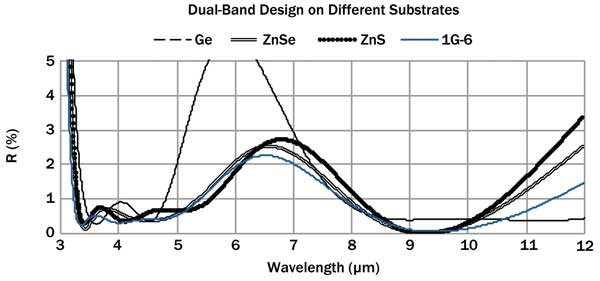
Figure 1. Design results of reflection on IG-6, ZnSe, ZnS and Ge at normal incidence.
The development of dual-band IR sensors1 with optics that share a common aperture has created a need for optical dual-band AR coatings.2,3 The coatings needed for the multiband IR systems are high-efficiency internal coatings and high-durability coatings that meet the external requirements of the system.
High-efficiency and high-durability coatings both must withstand the 24-hour humidity, adhesion, temperature differences, solvent solubility and moderate abrasion (cheesecloth) tests. On top of that, the high-durability coatings are required to withstand the severe abrasion (eraser) test as well as the 24-hour salt-immersion and salt-spray tests.
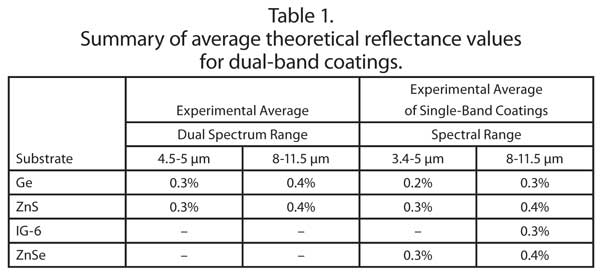
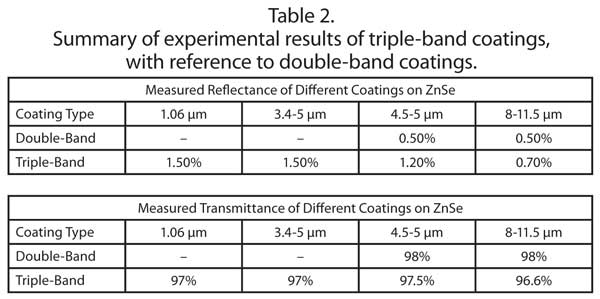
The transmittance measurements were on witness pieces with the same coating on the second side. The values are averaged over the spectral range.
The available commercial substrate materials for the 3- to 5-µm and 8- to 12-µm spectral regions are ZnSe, ZnS, Ge and several chalcogenide glasses: IG2-6 (Vitron Spezialwerkstoffe GmbH); Gasir 1,3 (Umicore); and Amtir 1-6 (Amorphous Materials Inc.). Some IR materials, such as silicon and sapphire, are suitable for the 3- to 5-µm region only; other IR materials are expensive, poisonous, brittle or hygroscopic. Materials for these bands that are transparent in the visible are ZnSe and water-clear ZnS. IG-6 was used in the experiments as a representative of the chalcogenide glasses because it is brittle and has a low transition temperature in that group (185 °C), making it a greater coating challenge.
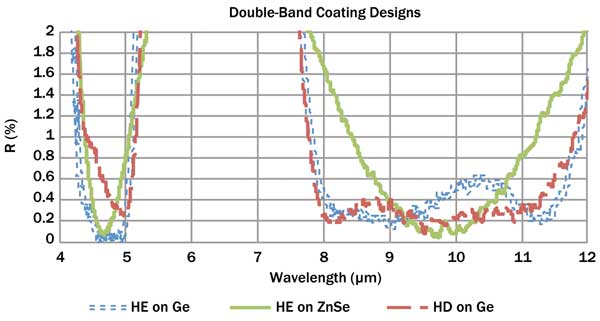
Figure 2. Experimental results of reflection on ZnSe and Ge substrates at normal incidence. For Ge, we tested a coating with high efficiency (HE) and a coating with high durability (HD).
Dual-band coatings
Several new coatings for the 3- to 5-µm and 8- to 12-µm regions, designed for different substrate materials, have been created with a minimal number of layers using materials with a proven record of durability, and using an addition of very thin adhesion layers that do not influence the optical properties. The theoretical designs vary from 11 to 16 layers, depending on the substrates, since the index of refraction of the substrates varies from 2.4 to 4. The designs, modified for the 4.5- to 5-µm spectral region, resulted in seven- to 24-layer coatings. Several designs are based on a Ge-ZnS layer pair, which is known to be stable and durable, for the application of IR filters. These coatings were deposited using the physical vapor deposition process with a 760-mm-diameter box coater. Physical vapor deposition is the main process for IR applications because it makes it easy to evaporate different materials at reasonable rates. Other processes either have lower rates or pose difficulties when coating with these materials.
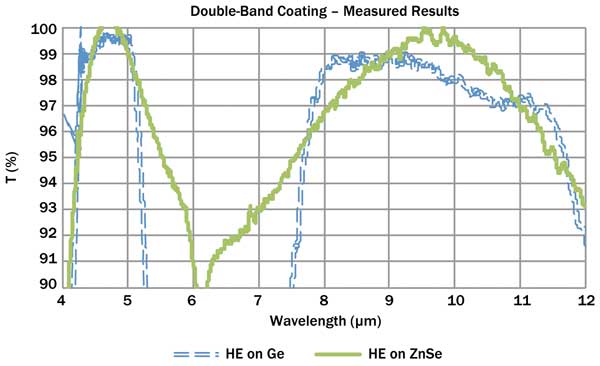
Figure 3. Experimental results of transmittance of ZnSe and Ge substrates coated on both sides, at normal incidence.
The theoretical design results are shown in Figure 1; in Figures 2 and 3 are the experimental results, which show that the absorption in the layers is insignificant. Table 1 compares the theoretical and experimental results with the performance of production runs of single-band coatings. Compared with single-band coatings, these relatively simple dual-band designs produce a rise in reflection of about 0.1 to 0.2 percent.
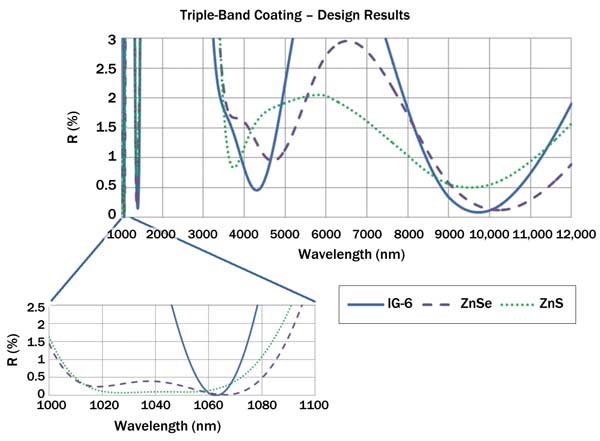
Figure 4. Design results of reflection on IG-6, ZnSe and ZnS at normal incidence.
Triple-band coatings
We were asked to design coatings for the 3- to 5-µm and 8- to 12-µm bands, with an additional transmittance peak at 1.06 µm for viewing a YAG laser designator with the same camera. The Ge-ZnS layer pair and germanium substrate cannot be used due to the high absorption of germanium below 2 µm. Since the requirement of the 3- to 5-µm region was not so strict, a suitable coating design could incorporate only seven layers. The theoretical results on ZnS, ZnSe and IG-6 are shown in Figure 4, and the measured results on ZnS and ZnSe are shown in Figures 5 and 6.
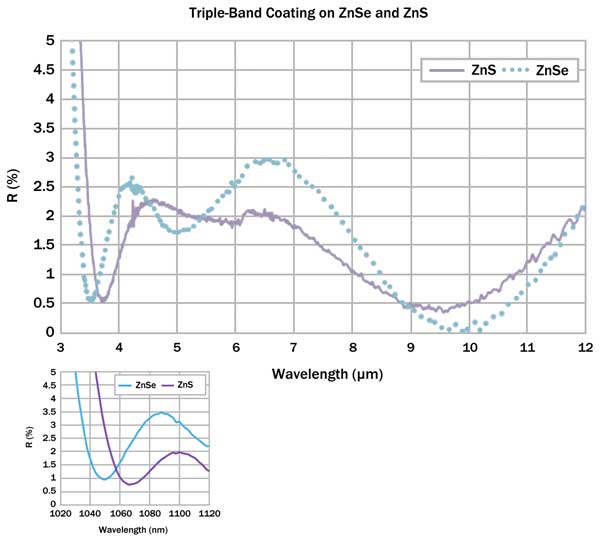
Figure 5. Measured results of reflection on ZnSe and ZnS at normal incidence.
These coatings are an additional step in the development of dual-band IR camera systems, which in several years will make up a larger portion of the IR market, especially the high-end military market. This market also will benefit from the development of similar coatings with a hard-carbon top layer to enhance the durability for external surfaces.
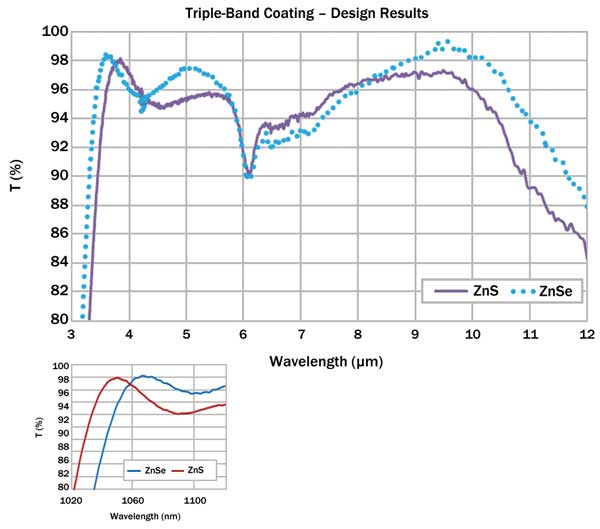
Figure 6. Measured results of transmittance on ZnSe and ZnS at normal incidence.
Meet the authors
Daniel Cohen is a coating designer at Ophir Optronics Solutions Ltd., a Newport Corp. brand, in Jerusalem; email: [email protected]. Dr. Yevgeni Stolov is a senior coating physicist, and Amnon Azran is a senior coating designer. Dr. Mordechai (Motke) Gilo was formerly the process development manager of R&D and engineering at Ophir Optronics and now works as coating manager at Lumus-Optical Ltd.
References
1. M. Müller et al (2007). Real-time image processing and fusion for a new high-speed dual-band infrared camera. Proc SPIE, Vol. 6543, 654310.
2. C. Cole et al (1996). Nonradioactive infrared coatings for single- and multispectral applications. Proc SPIE, Vol. 2776, pp. 72-83.
3. T.D. Rahmlow Jr. et al (2008). Dual band antireflection coatings for the infrared. Proc SPIE, Vol. 6940.